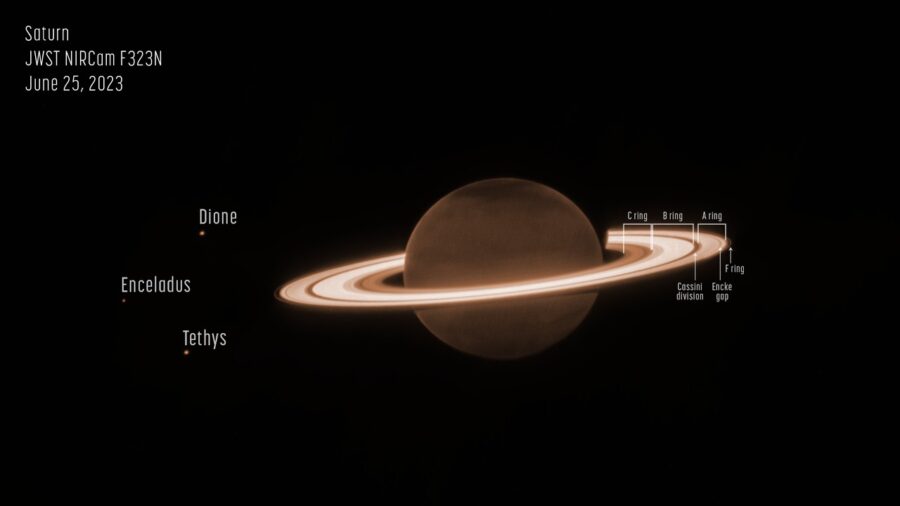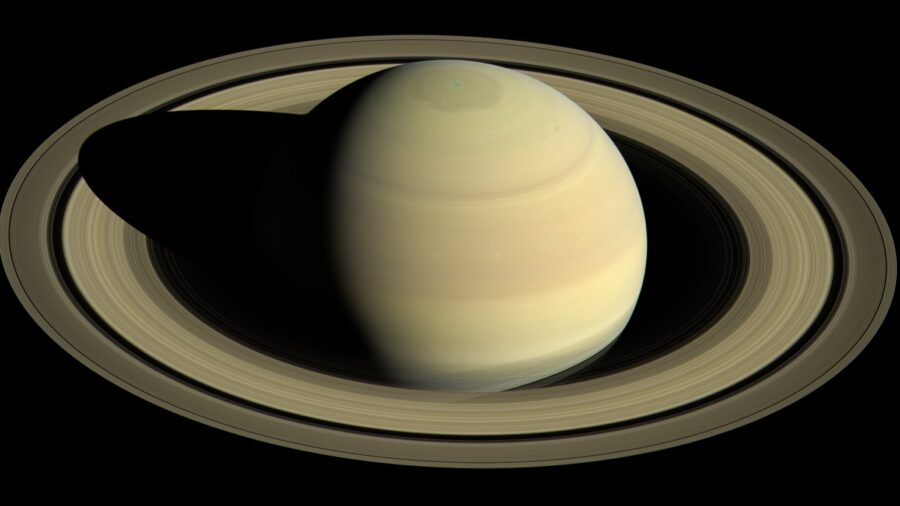NASA Releases Beautiful Color Photograph Of Saturn
NASA used the James Webb Telescope to take an amazing full-color image of Saturn.
NASA just published new photos of Saturn that were taken by the James Webb Space Telescope using Near-Infrared Camera (NIRCam) technology, and we’re wondering why they haven’t done a photo shoot of the mysterious ringed planet sooner! The image was taken using deep exposures and shows us, in stunning detail, several rings, as well as three of Saturn’s moons: Dione, Enceladus, and Tethys. Perhaps the most breathtaking aspect of these photos is the contrast in color between the planet itself, its moons, and its rings.

This photo materialized after an attempt was made to test Time Observation program 1247, and its ability to detect faint moons surrounding Saturn. This new photo of Saturn is unique because it’s the first time the planet has been photographically captured at a 3.23 micron wavelength. The result we’re seeing at this particular wavelength is much darker than we’ve seen in the past, but we’re also getting a more detailed look at Saturn’s rings due to the contrast in brightness and color.
Caltech reports that as of May 2023, Saturn has 124 moons. Though we’re only seeing three moons in this new photo, we’re well on our way to figure out the complex nature, and relationship between Saturn’s moons and its rings. This new photo will also be instrumental in understanding information we already know about the gas-giant. Given the complexity of Saturn’s ring and moon formations, any new information will continue to amaze us upon further peer review.
One somewhat recent discovery made by utilizing the James Webb Space Telescope also revealed that one of Saturn’s many moons, Enceladus (visible in this picture), is emitting a plume of water vapor that has a reach that’s over 20 times the size of the small, icy moon itself. Scientists believe that this large, jetting plume of water plays a critical role in supplying Saturn’s entire system as well as it rings.

Though Enceladus just 313 miles in diameter, its geyser-like volcanoes spew jets of ice particles, water vapor, and organic chemicals over 6,000 miles from its surface.
This source of water vapor comes from Enceladus’ ocean of salty water that can be found between its icy crust and its rocky core. Researchers have evidence suggesting that the plume of water vapor jetting out of Enceladus is feeding Saturn’s E ring.
In our ongoing search for life beyond Earth, it’s safe to say that this development is exciting when you consider that the plume is pushing out almost 80 gallons of water per second.
Webb’s NIRCam has opened up an entirely new world of possibilities in researching Saturn. As researchers continue to explore Saturn, its dozens of moons, and how they all relate to one another, there’s no knowing what’s left to be discovered.
Scientists will continue to piece together their findings and with them, have a greater understanding of Saturn’s current system and past systems and how they relate to each other.
If all of this makes your head want to explode, then you might want to brace yourself for when NASA unveils the deeper exposures that they captured that have not yet been published.











